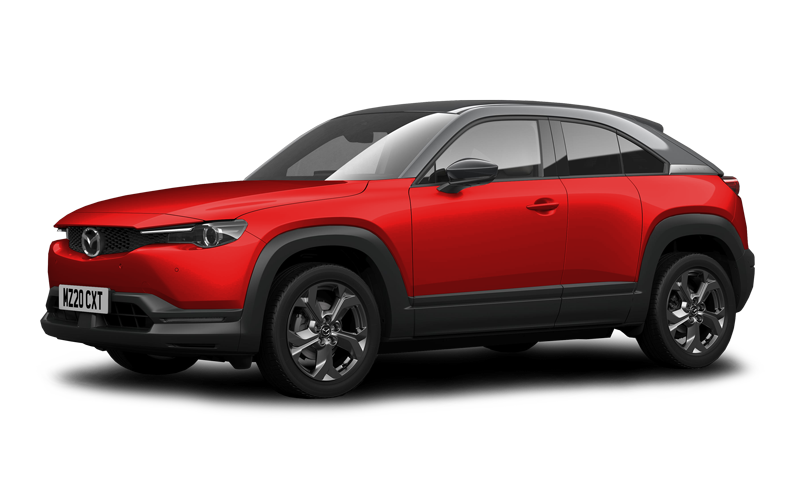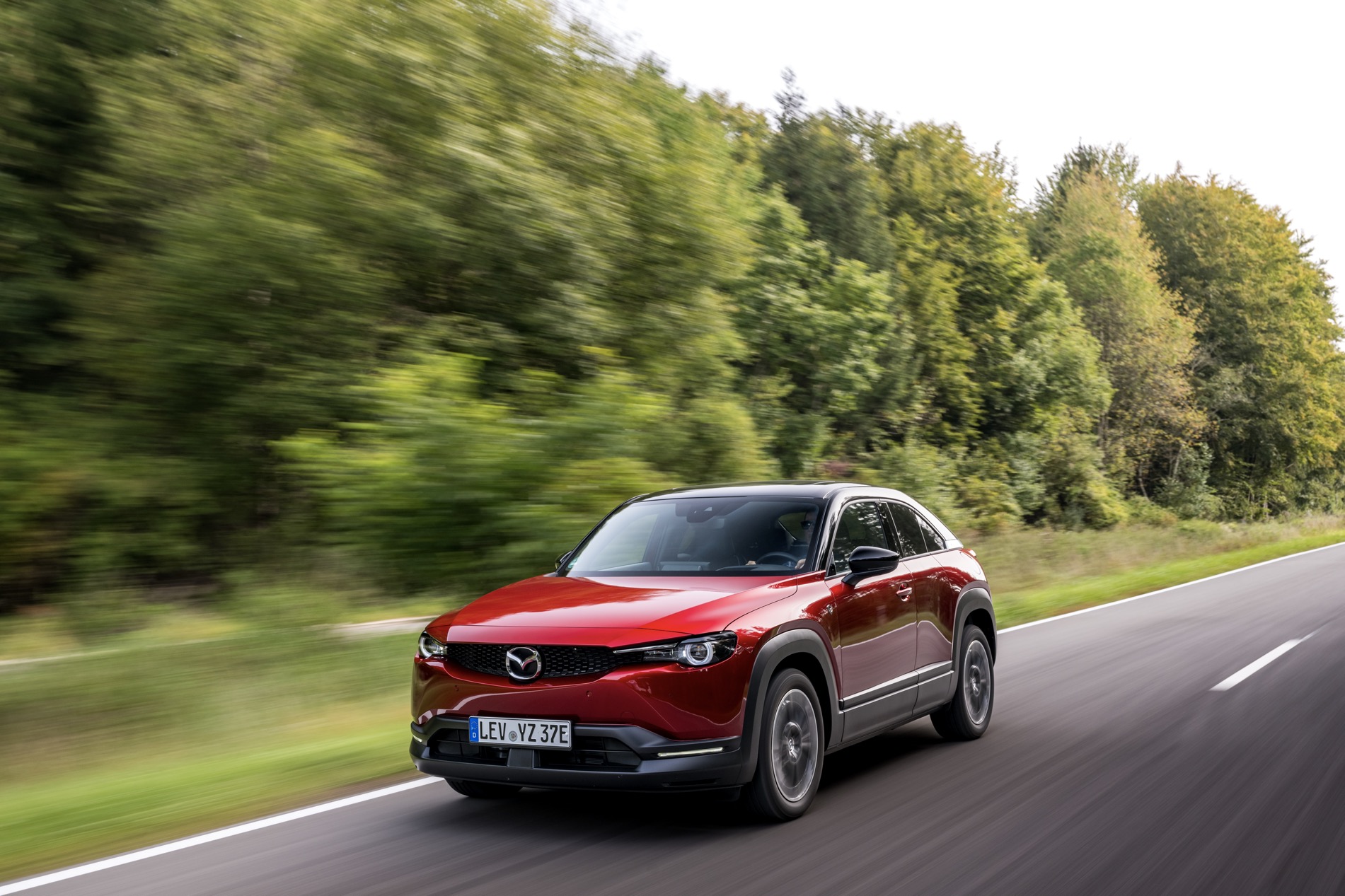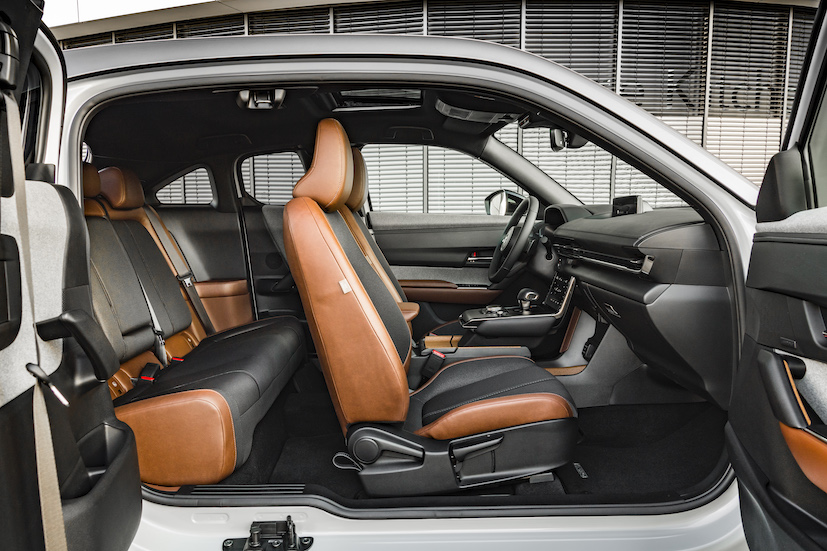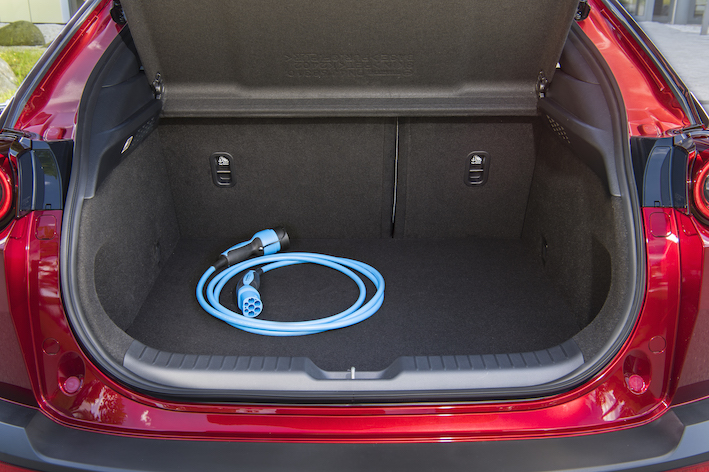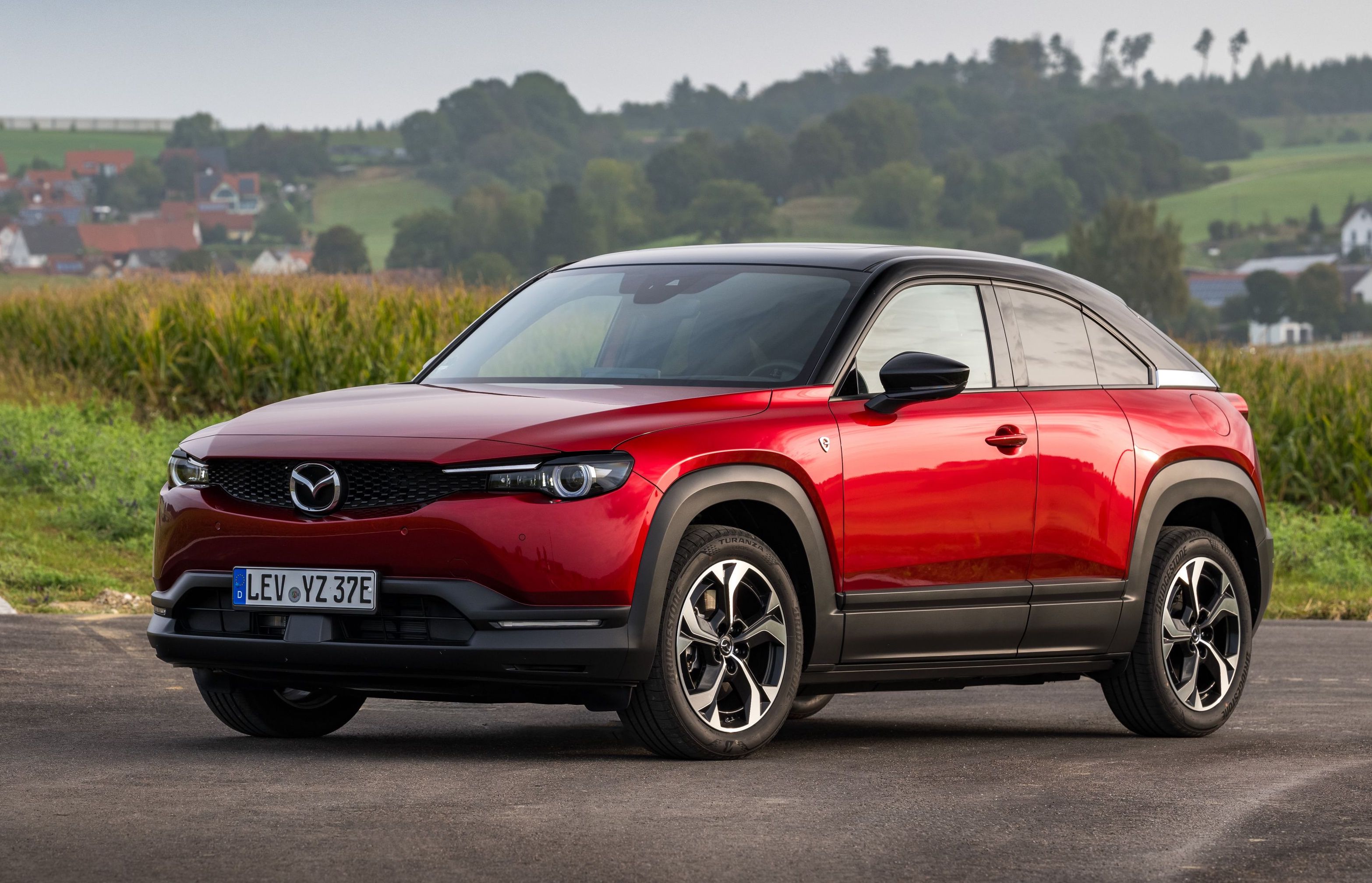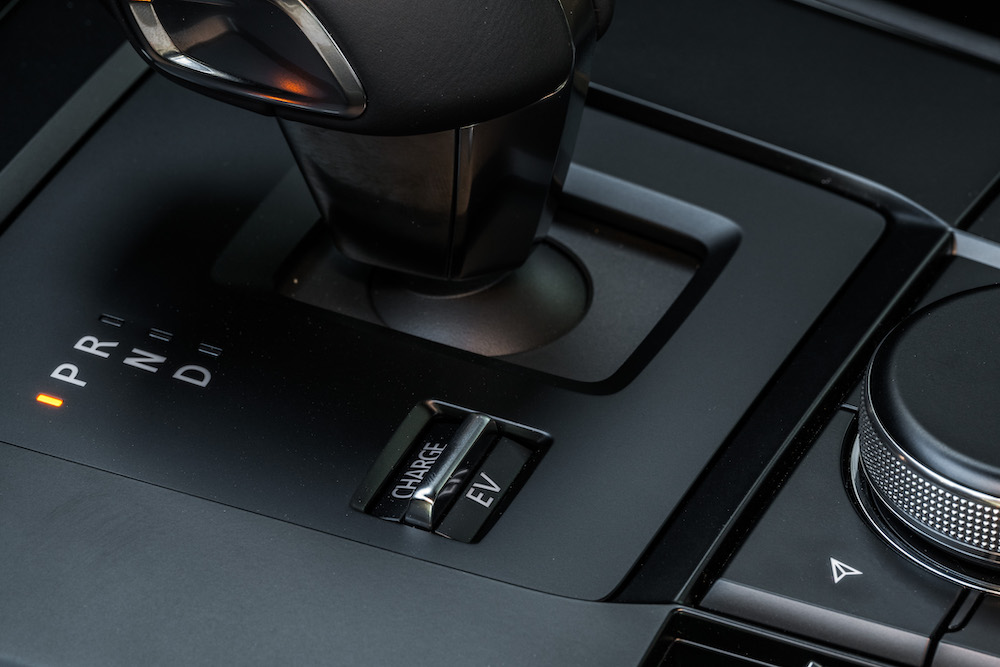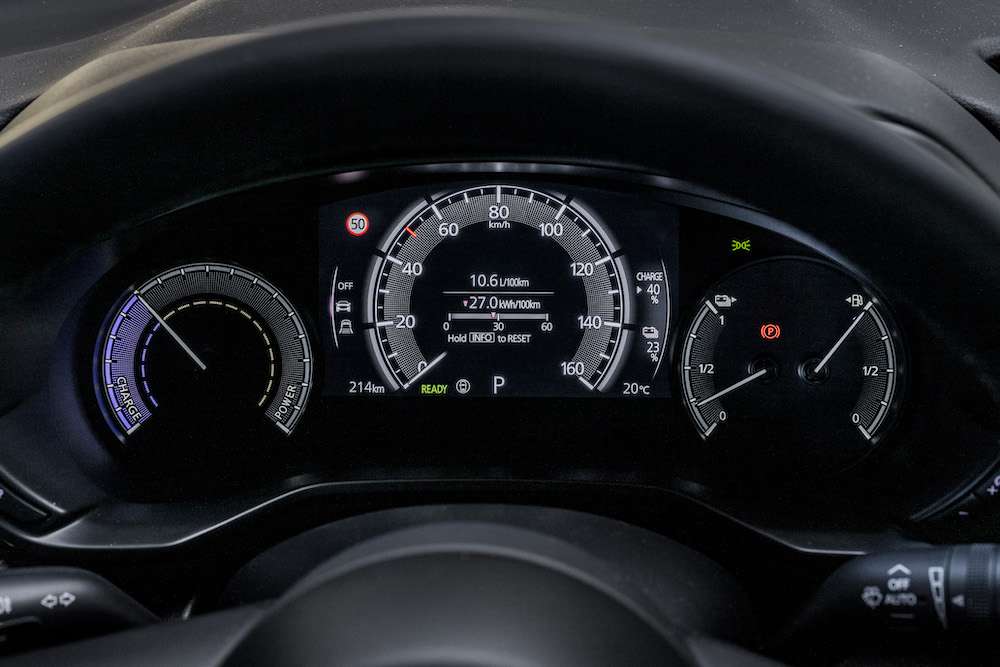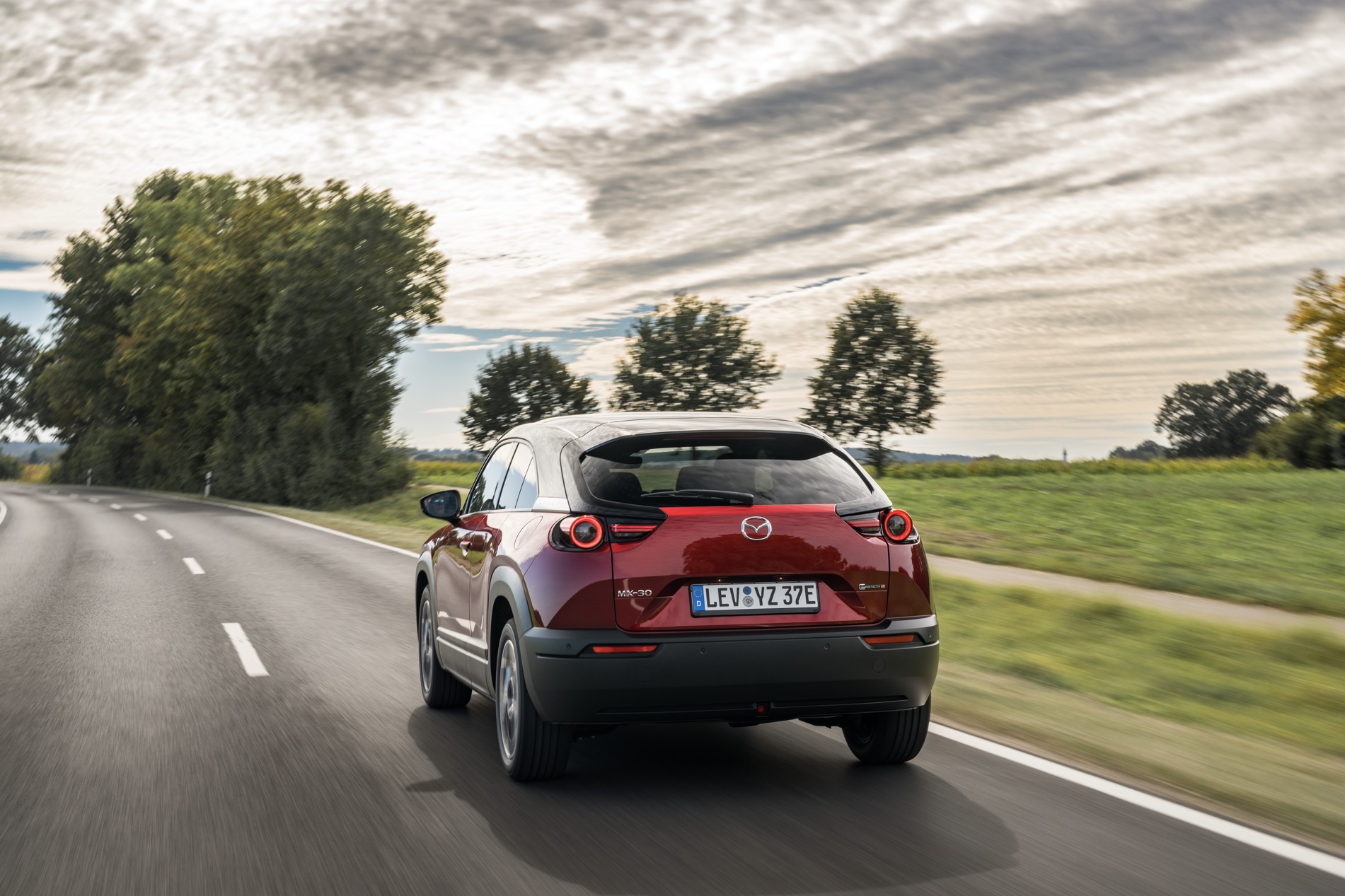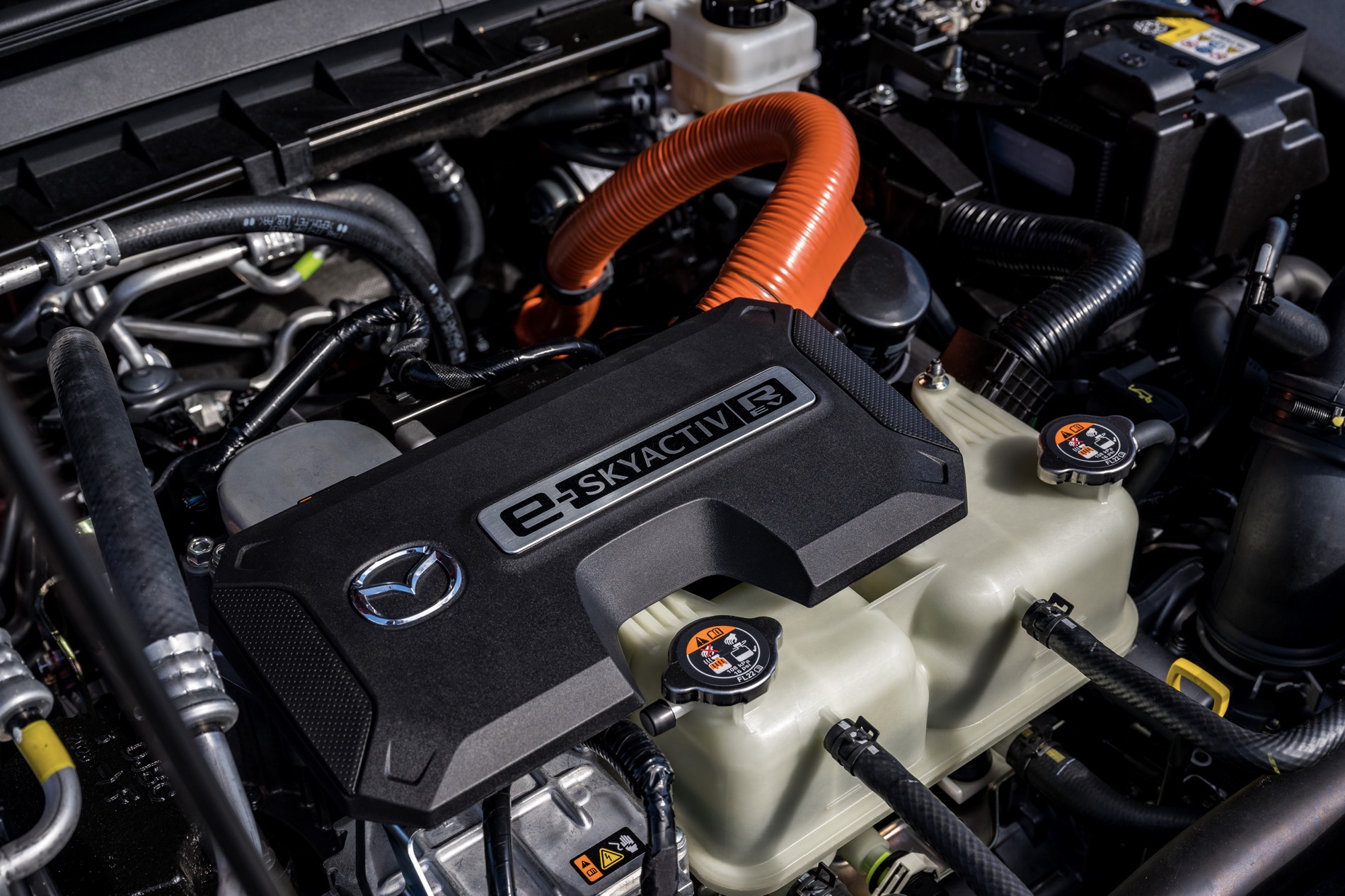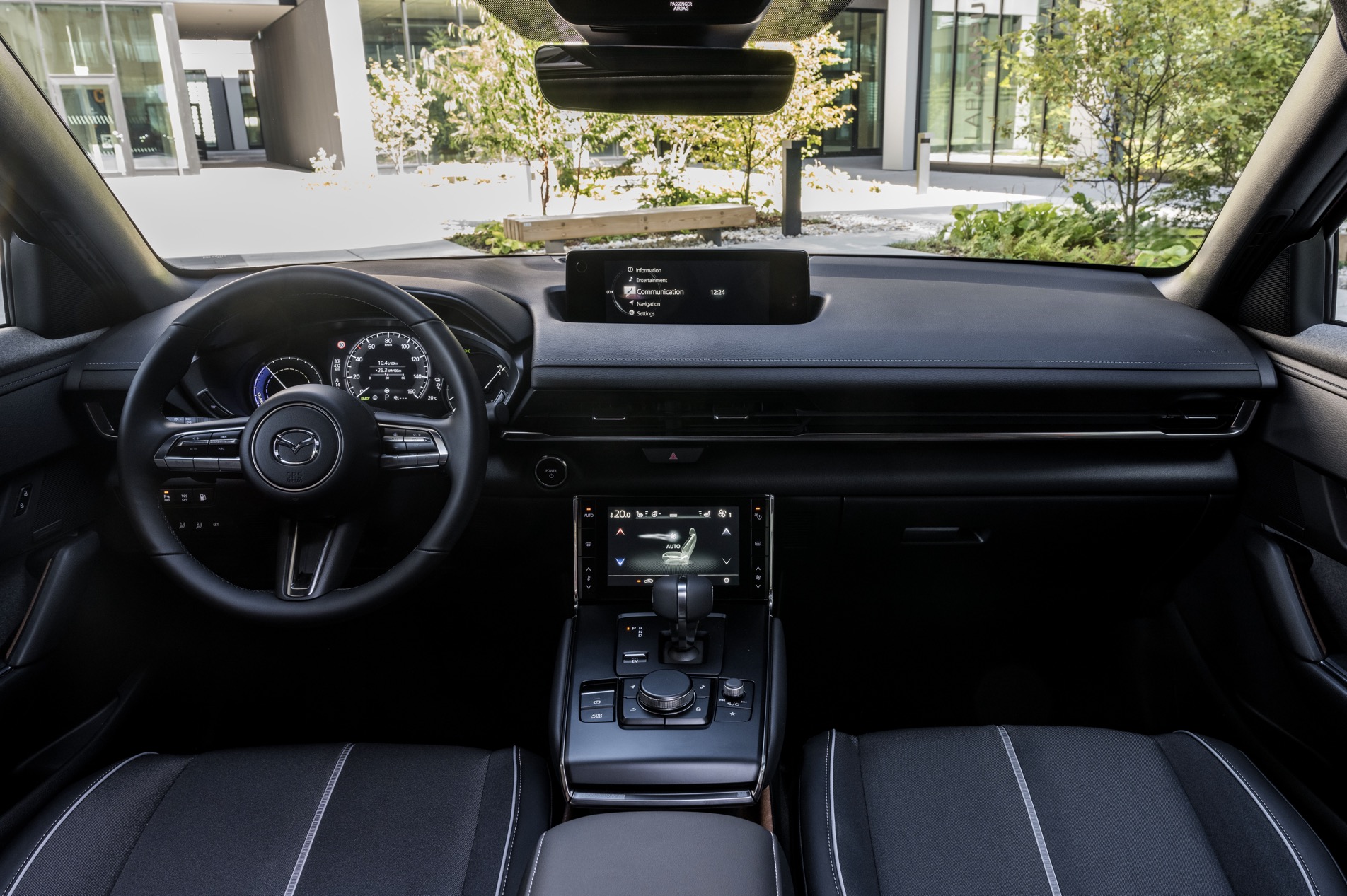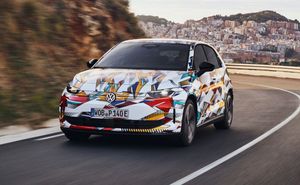The company has filled the yawning gap under the bonnet of its familiar MX-30 pure electric car with a tiny 830cc petrol engine, creating a range extender. This means that the motor kicks in when the battery is running low or you need a bit of extra pep, acting as a generator, giving the little SUV a total range of 373 miles.
This is undoubtably clever, and the engine itself is interesting. Instead of having pistons thrashing up and down as on most internal combustion motors, Mazda has persevered with the rotary engine – also known as the Wankel, much to the amusement of teenage boys.
These types of engine are small and smooth, but have been beset by fuel economy and reliability issues in the past. Has it finally found its niche helping out electric cars?
Range, battery and charging
The battery in the standard MX-30 is one of the smallest of any electric car, at just 35.5kWh, giving an official range of 124 miles. This dips into two figure territory on cold weather, though. In the RV the battery has been chopped in half at 17.8kWh, giving this car an electric-only range of 53 miles.
After that you either need to charge up, or let the petrol engine kick in and generate power to run the motor, which should – in theory – take you for another 320 miles.
This works pretty much seamlessly on the road. There are three modes to choose from: the EV setting just uses battery power, unless you push the throttle pedal to the floor when the engine will come to help. If the charge runs out, the petrol power takes over too.
The ‘Normal’ mode keeps the engine on standby and will use as much electric power as possible until the battery reaches 45%. Then the motor will be used more often to maintain the charge level.
The last is ‘Charge’, which keeps the engine running all the time until a pre-set level of battery capacity is reached. When driving down hills or on the flat it adds an extra percent every minute or two.
But there is a problem. With a claimed efficiency of 3.5 miles per kWh, the standard all-electric MX-30 is already way behind the efficiency of more modern rivals – for example the Fiat 600e manages 4.9 miles per kWh. Carrying around an engine makes the Mazda’s efficiency even less impressive, so the R-EV's official figure dips it just below 3 miles. That’s less than a Rolls Royce Spectre.
When you do come to plug in, the range-extender MX-30 charges at the same rate as the all-electric car – that’s a maximum rate of 11kW AC or 36kW DC. That latter figure is particularly disappointing – a Vauxhall Mokka or Corsa can accept up to 100kW.
Running costs
Once that electric motor is exhausted and you are running on petrol alone, the engine will take you 320 miles on the contents of the 50 litre fuel tank. The main benefit of this is that it can be refilled at any fuel station and carry on without having to stop and charge, but the downside is that it is hugely inefficient too. My calculator says that 320 miles from 50 litres is equal to 29mpg – that’s the same as a petrol-powered, non hybrid Range Rover. The real world figures are likely to be even lower. Even if you factor in the battery range it’s still only improving to 33mpg – hardly impressive.
In the real world, where you are unlikely to be driving to empty on every journey, it’s not quite that bad according to our test drive. We started off on a 75 mile journey and the trip computer showed that we’d used 8.7kWh and achieved 59mpg. That’s still no better than a small petrol hybrid like the Honda Jazz though – and they don’t need plugging in.
This lack of efficiency also has an effect on company car drivers. Although the MX-30 is partly an electric car, it can’t stretch to the 70+ miles needed to reach the 5% benefit-in-kind rate of the most efficient PHEVs. It means the R-EV is taxed at 8% and costs £33 more per month for a 20% tax payer than the electric version. That’s still less than half the cost of a regular hybrid though, and better than any other PHEV which gets anywhere close to the Mazda's price.
For private buyers it's also worth bearing in mind that the servicing costs on the R-EV will cost more too, as it will need oil changes and inspections in the same way as any other internal combustion engine.
The insurance groupings are also higher, at 22E versus 19E for the pure electric model.
Driving
The MX-30’s fight-back feature has always been the way it drives. The pure electric version is lighter than most electric cars, which makes itself felt on the road. It is less effort to haul through corners and the steering feels more alive than the lumpen feel of most rivals.
The R-EV version is 130kg heavier, but still feels nimble and sporty compared to most rivals and it rides well over bumps and broken roads. Only occasionally are you reminded that the Mazda’s strange door arrangement means the bodyshell is a little more flexible than conventional hatchbacks.
It’s not a fast car by most standards but you never feel it is too slow in the same way you might occasionally in a Jeep Avenger or Fiat 600e. A 0-62mph time of 9.1 seconds is far from quick, and the Mazda lacks the acceleration you experience in a car like MG4 even when the petrol engine and battery work together to help.
The sound coming from the engine bay is muted enough to be unobtrusive if you have the radio on, but is slightly odd if you are not used to it. The motor’s natural noise is supplemented by an artificial note piped in through the speakers, but on the motorway it still manages to sound like a sound effect of someone drilling into the wall next door played at half the normal speed. Any Mazda classic fans expecting the high-speed howl of an RX7's rotary are going to be baffled and disappointed.
The engineers have done a fine job with calibrating the seams between the petrol and electric motors though. If you are not listening out for them or looking at the screen, you’d never know when the petrol engine is running.
Practicality and technology
The Mazda might be pitched as a competitor to small city cars but it’s actually longer than a Volkswagen ID.3, with a length of 4,395mm. That translates to some reasonable interior space, with a 350 litre boot (a small 17 litre drop from the full EV model) and rear seats which are big enough for teenagers. Bear in mind that the rear-hinged back doors are a pain for regular school runs though, and passengers will complain about the small, fixed windows.
The driver and front passenger should be happy though, as the seats are comfortable and have plenty of adjustment. The slightly raised driving position will be popular with SUV-loving motorists too.
The technology ticks most of the boxes too, although there is nothing to wow. There’s a 7-inch screen which looks on the small side for the navigation and smartphone mirroring high up of the centre of the dash with another, larger screen lower down to control the heating and ventilation.
Our favourite part? From the top-of the-range Makoto has a 1500W V2L plug socket in the boot which can be used to power external devices such as a fridge or charger.
Pricing
The two cheaper versions of the R-EV mirror the price of the all-electric model, starting at £31,250 for the Prime-Line and rising to £33,095 for the Exclusive-Line. The range topping Makoto is £35,945 – which is £450 more than the pure-battery car. This price difference is entirely down to the R-EV having a V2L power socket in the boot, so make the most of it.
That pricing makes it an interesting alternative to both electric, petrol and hybrid small SUVs and hatchbacks such as the Fiat 600e, Peugeot e2008 and Honda Jazz.
The finance figures are interesting though – while the list prices are the same, the PCP monthly payments are £36 cheaper for the R-EV as it is expected to hold its value better.
Verdict
There’s no doubt the MX-30 R-EV is an impressive and interesting piece of engineering. It drives well and makes the electrified Mazda a more practical proposition for thousands. As an alternative to pure electric cars it looks decent value too.
But while I love the quirkiness and performance of the unique rotary engine, the R-EV is very inefficient. Use it as an electric car for commuting during the week and it will use more energy than any other EV, while requiring you to plug in more often to top up the tiny battery. If you are one of those drivers who use a PHEV as a company car tax dodge and never plug in, the Mazda’s petrol consumption will make you wince.
The ability to drive it like an EV during the commute and then have the back up of a petrol motor when a long journey beckons is a safety net which will appeal to many drivers. I just wish the company had used a bigger battery or developed a more efficient engine so it made more sense in the real world.








